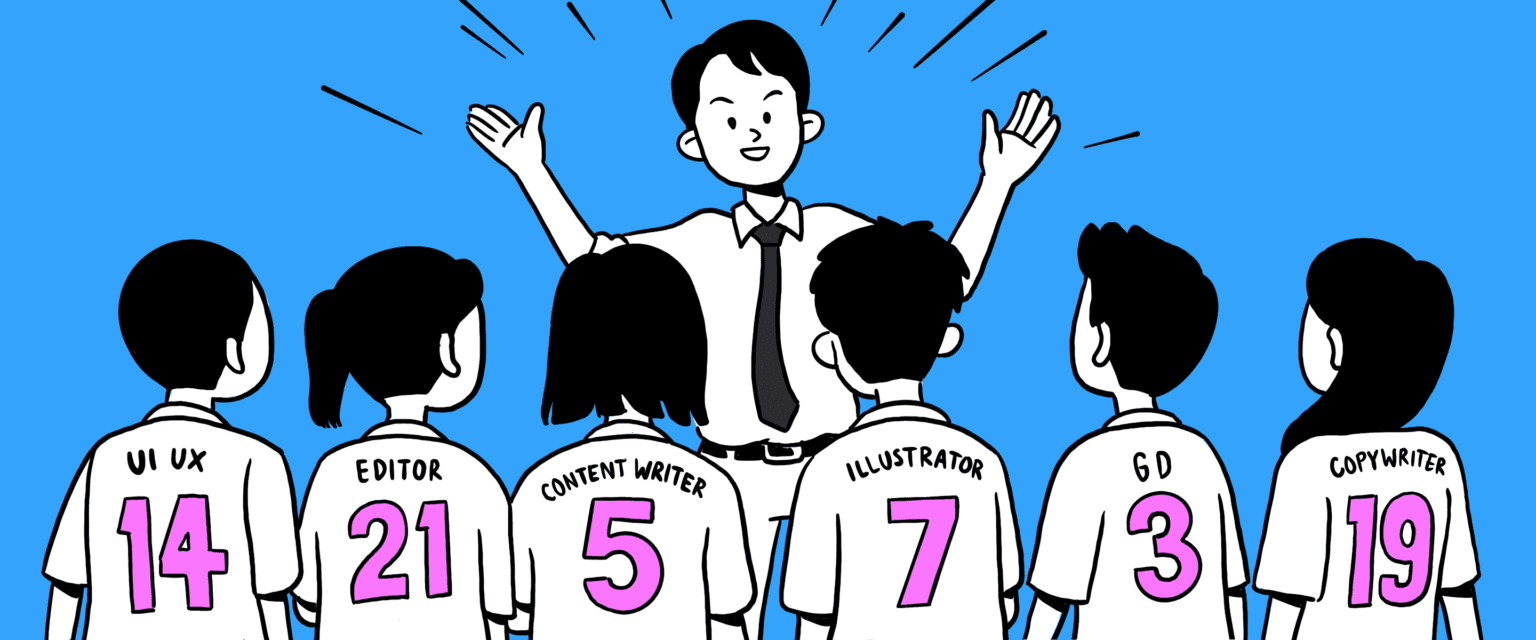The creative team’s job is to design campaigns and create different types of content to promote services or products. By developing fresh ideas into engaging content, the creative team can create a consistent identity for the company. The creative team requires good coordination and collaboration in carrying out their duties. A creative team has various job titles with varying job descriptions, but they all have the same goal. So let’s find out how to manage creative teams!
What is a creative team?
Creative teams work with their creativity to support the companies. They turn ideas and concepts into unique campaigns that will drive audiences to engage with the brand and make a purchase. They can also see a problem and then create a solution with creative content.
There are many creative team positions with varying job descriptions. Some examples of creative team titles could include:
- Copywriter
- Editor
- Graphic designer
- Illustrator
- Photographer
- Producer
- Production artist
- Web designer
- Content Strategist
- Content Writer
- SEO Specialist
- Creative Director
- UI/UX Designer
- Videographer
However, your creative team must have a strategic component beyond developing content. While other people in the organization shape the strategic direction of the content, the innovative team must at least have a strategic mindset. The creative team should also be able to advise on how to develop content.
Creative team challenges
Before effectively managing a creative team, you should first understand the challenges they face. The following are some of the challenges that creative teams often face.
1. Demanding creativity within a limited amount of time
The creative process requires outside-the-box thinking and is certainly not done with haste. Brilliant ideas don’t come easily in a short amount of time. However, many companies measure the performance and productivity of creative workers by the speed with which they work.
In other words, the heavy workload demands the creative team to produce high-quality work quickly. That often puts pressure on them, so that the impact on the quality of workers. In the end, there is no time to explore creativity further.
2. The development of social media platforms
Social media platforms that are growing and mushrooming with various channels are one of the challenges for the creative team. That’s a sign: They must adapt quickly to social media development to produce relevant and on-target content. Moreover, they must constantly update with the latest social media characteristics, which are not small in number and will even increase.
3. Limited time for personal development
There is always a hectic working time of the week. Creative workers must divide their time carefully between themselves, family, and maybe friends. As a result, there is limited time for personal development. Nevertheless, some have kept time each week to improve their skills. Either through seminars, personal projects, lectures, or books.
How to manage creative teams
As a creative team leader, you must manage the team so they can face the challenges without compromising their creativity. The following are some steps you can take to manage your team effectively.
- Be the leader who inspires the creative team to grow.
You can inspire them by setting an example and showing them that you rely on them to do something creative. That way, they will develop their skills, knowledge, and abilities. Also committed to doing it themselves, they will naturally be more inclined to follow suit.
- Build communication every day
The enemy of creative employees is rigid relationships. You can manage creative teams with proper communication, it will help them understand your expectations. That way, they can channel all their energy towards a specific goal. The more open the communication is, the more efficient the team will be. While it’s essential to communicate with your team daily, remember that creativity also requires autonomy and freedom! So please don’t put too much pressure on them. Instead, you can learn about their aspirations, accomplishments, strengths, and challenges and encourage them to think and organize brainstorming sessions on their work.
- Encourage collaboration in teams.
Facilitating brainstorming can help foster inspiration and build creative culture. Pairing creative team members according to their strengths can also encourage a good collaboration process. You can combine the different abilities and strengths of each team member. So that project results can be of high quality and meet deadlines.
- Don’t forget to give feedback and team appreciation!
Feedback makes team members grow and improve project outcomes. That’s why continuous feedback is essential and can drive productivity and collaboration and instill trust between leaders and teams. A study from Gallup found that when 27% of employees receive feedback, it helps them perform better. Manage creative teams with providing regular feedback to make them feel valued.
Manage your greatest creative teams
Building a collaborative creative team You must set clear guidelines. Before trying to manage your team, it’s a good idea to understand their challenges. If you want to know how to effectively manage a creative team, start by learning how to think creatively and what challenges they face. Understanding what they need can help provide the ideal work environment. So they can show their potential while achieving team goals.


